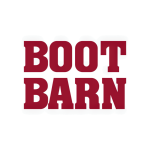Welcome to our dedicated page for Boot Barn Hldgs SEC filings (Ticker: BOOT), a comprehensive resource for investors and traders seeking official regulatory documents including 10-K annual reports, 10-Q quarterly earnings, 8-K material events, and insider trading forms.
Boot Barn鈥檚 financial story is as distinctive as the craftsmanship behind its boots. From same-store sales swings tied to rodeo season to the cost of expanding its nationwide store base, each disclosure offers clues about how this western-inspired retailer defends margin and brand loyalty. If you have ever searched for 鈥淏oot Barn SEC filings explained simply,鈥� you are in the right place.
Stock Titan combines machine learning and retail expertise to surface what matters in every form. Our AI scans the Boot Barn annual report 10-K simplified for inventory risk language, highlights cash-flow trends in the Boot Barn quarterly earnings report 10-Q filing, and sends instant alerts on Boot Barn Form 4 insider transactions real-time. Curious about seasonal updates? The platform decodes Boot Barn 8-K material events explained and links them to market reactions within minutes. Even the nuanced tables in a Boot Barn proxy statement executive compensation filing are translated into plain English so you can see exactly how leadership gets paid.
Whether you need a snapshot of Boot Barn insider trading Form 4 transactions, a deep-dive Boot Barn earnings report filing analysis, or guidance on understanding Boot Barn SEC documents with AI, our tools keep you ahead. Use AI-powered summaries to:
- Track Boot Barn executive stock transactions Form 4 before they move the market
- Compare quarter-over-quarter revenue drivers without sifting through 200 pages
- Spot supply-chain or weather disclosures the moment they hit EDGAR
Laurie Marie Grijalva, Chief Merchandising Officer of Boot Barn Holdings, Inc. (BOOT), reported the sale of 7,487 shares of Boot Barn common stock on 08/26/2025 at a weighted average price of $172.14. The filing states those sales occurred across multiple transactions at prices ranging from $172.00 to $172.46. Following the reported sale, the reporting person beneficially owned 7,106 shares directly and held 9,011 shares underlying restricted stock units that remain subject to time-based vesting.
Boot Barn Holdings, Inc. ("BOOT") Form 144 notice: This filing notifies of a proposed sale under Rule 144 of 7,487 common shares through Merrill Lynch (Newport Beach, CA) with an aggregate market value of $1,288,797.25. The shares represent restricted stock units that lapsed in April鈥揗ay 2024 (multiple grant dates) and were acquired from Boot Barn Holdings, Inc. The filer reports 30,555,623 shares outstanding for the class and indicates an approximate sale date of 08/26/2025 on the NYSE. No securities were reported sold in the past three months, and the filer affirms no undisclosed material adverse information.
Brenda I. Morris, a director of Boot Barn Holdings, Inc. (BOOT), reported a sale of common stock on August 21, 2025. The Form 4 shows a disposition of 1,500 shares at a price of $170 per share. After the reported transaction, Ms. Morris directly owned 4,344 shares of common stock. The filing also discloses 2,620 shares underlying restricted stock units with vested criteria satisfied but delivery deferred, and 926 shares underlying time-vesting restricted stock units that remain subject to vesting.
The report is a routine Section 16 disclosure of insider trading activity: it lists the sale, the remaining direct holdings, and the nature of indirect/deferred holdings without additional commentary or other transactions.
Boot Barn Holdings, Inc. (BOOT) submitted a Form 144 notice reporting a proposed sale of 1,500 common shares through Merrill Lynch on the NYSE with an aggregate market value of $255,000 and an approximate sale date of 08/21/2025. The shares were acquired as restricted stock unit awards on 05/22/2021 (25 shares), 05/14/2022 (1,277 shares) and 05/20/2024 (198 shares). The filer reports no securities sold in the past three months and affirms they are not aware of undisclosed material adverse information about the issuer.


